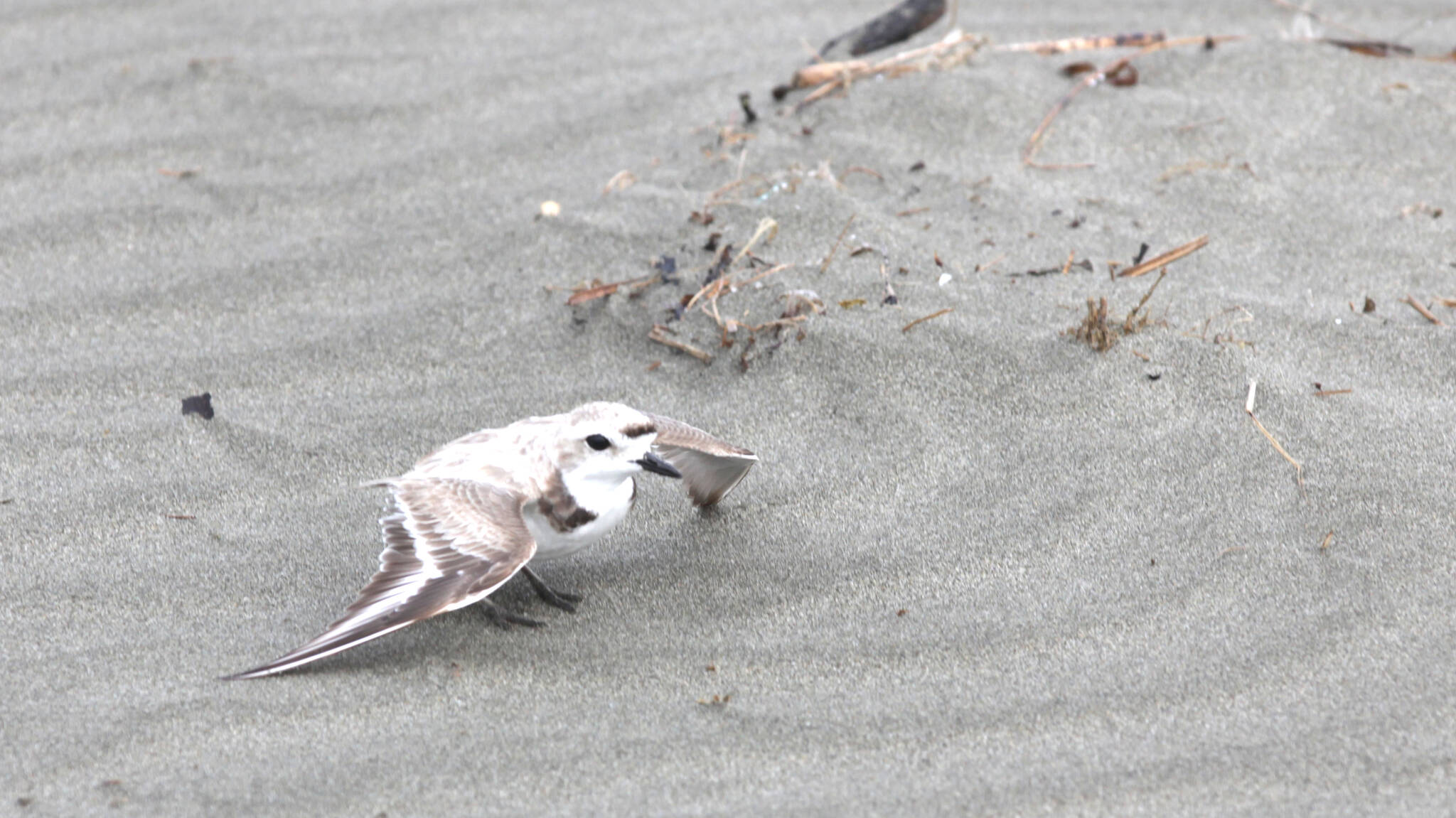It’s a drizzly morning on the Graveyard Spit near Tokeland and I’m out here in the misty haze, where the sea blends into the low clouds, looking for birds slightly bigger than cotton balls on a beach that feels approximately the size of Rhode Island, when I look this closely.
Blending in to the sandy scrub by the shoreline, snowy plovers are inconspicuous little birds, darting to the shoreline to find food or sitting on the eggs in their nests.
But they’re inconspicuous for other reasons as well — only a few dozen of the birds are known to be left in Washington.
“We have less than 100 in the state of Washington,” said Cyndie Sundstrom, a wildlife biologist with the Shoalwater Bay Indian Tribe’s Department of Natural Resources. “This area, so far this year, has the highest number of breeding adults. And has been that way for several years”
The plovers like to nest on the shore in the tribal lands, preferring to lay their eggs in open, sandy beach area.
“They like sparse vegetation,” Sundstrom said. “They prefer more open range.”
Small birds, small numbers
Habitat loss has been a major factor in the dwindling numbers of the tiny shorebirds, Sundstrom said.
“It started with the introduction of invasive beach grass,” Sundstrom said. “Now the birds are more limited in where they can nest successfully.”
While the snowy plovers nest in several places, their greatest concentration is around the beaches of Graveyard Spit, said Larissa Pfleeger-Ritzman, who runs Shoalwater Tribe’s DNR. The department works hard to get grants to fund monitoring and observation of the endangered birds.
“We don’t really know why their preference for this side is,” Pfleeger-Ritzman said. “We just kind of throw as much as we can at it and get as much as we can done.”
The department has been monitoring the birds since 2012, Pfleeger-Ritzman said, when there were just four nesting pairs on the beach. By 2018, there were 38 nests, Pfleeger-Ritzman said. This year, there have been 25 so far, Pfleeger-Ritzman said, with a nesting season that goes from about April 1 to Sept. 15.
“We do what we call nest searching. You have to find the nests first,” Sundstrom said. “Each bird has their own preference, like this one out in the middle of nowhere,” she said, gesturing to a trio of eggs located in the middle of a flat, nondescript sandy area.
Nests can be located by observation, by following bird tracks in the sand, or by complete accident while on the beach, Pfleeger-Ritzman said.
“When it’s dry out, it’s good for tracks,” Pfleeger-Ritzman said. “When there’s this crust of rain, they’re too light to leave tracks.”
Please do not disturb the birds
Personnel checking the nest first spot the nests from a distance using a combination of GPS and scopes before walking up on foot to count eggs. Snowy plovers typically lay up to three eggs in a clutch, although very rarely they will lay up to six, Sundstrom said.
“The biggest importance of why we want to see chicks fledge from here is site fidelity,” Sundstrom said. “The more chicks that fledge in our local areas, the more will return or stay here.”
Plovers also nest in Oregon, California and Mexico, Pfleeger-Ritzman said. Here in Washington, state or tribal agencies line out the nesting areas, so people don’t inadvertently interfere with the nests, which blend closely in the sand, adding to the threats to the endangered birds. In decades past, unrestricted ATV use nearly killed off an entire population near Damon Point, Sundstrom said.
Predation from scavengers such as ravens and crows is an issue, Sundstrom said — the tribe has removed a number of alder trees that provided perches for these birds as they sought to spot plover eggs to eat.
“They’re special… there’s so few of them,” Sundstrom said. “They’re shorebirds. They’re part of our wildlife list.”
Do you wish to view the birds?
Like the sun, viewing the birds is best done from a distance. Dogs, humans, vehicles and trash, especially in the fenced off area, can lead to the death of plovers, Sundstrom said.
“Abide by the signs,” Sundstrom said. “Any disturbance can mean the failure of a nest or the demise of a chick or more.”
Do not enter the marked areas, said Pfleeger-Ritzman. Do not ignore the signs. The Midway beach access in Grayland offers a much more accessible way to visit a nesting population: while the nesting site is still fenced off, birdwatchers can drive much closer for viewing, Pfleeger-Ritzman said.
“People just stand here or have their dogs off leash,” Pfleeger-Ritzman said. “That’s the biggest problem.”
ATV tracks through the fenced area, dangerously close to at least two nests, makes it abundantly clear what at least some members of the public think of the federal laws around endangered species. Too much human interference from beachgoers can push a plover off their nest, leading them to abandon it, Pfleeger-Ritzman said.
“What’s good for the species is good for the habitat is good for the public,” Pfleeger-Ritzman said. “You just gotta try to talk to the public how they understand.”
Contact Senior Reporter Michael S. Lockett at 757-621-1197 or mlockett@thedailyworld.com.



